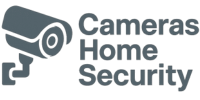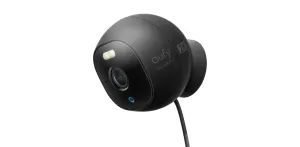A Closer Look at Dome Cameras: Are They the Security Guardians We Need?
When I first decided to ramp up security at my cozy little coffee shop, the plethora of camera options out there had me spinning more than a double shot of espresso on a Monday morning. Among the myriad of choices, dome cameras particularly caught my eye—sleek, unobtrusive, and they seemed to shout, "I've got my eye on you!" But it begged the question: Are dome cameras really more secure than their counterparts? Let's dive into what I discovered in my quest to make my café a safer haven.
The Design Factor: Why Dome Cameras?
First off, let’s talk design. Dome cameras are aptly named for their dome-shaped casing, which does more than just add aesthetic appeal. This design is not just about looking good; it serves several practical security purposes:
- Vandal Resistance: The dome’s shape makes it hard for vandals to tamper with. You can't easily pull it down or reposition it, which is a plus if you're concerned about deliberate damage or tampering.
- Discretion and Deception: Ever played that game where you try to figure out where the camera is pointing? The dome’s opaque cover usually masks the camera's direction, making it difficult for someone to dodge its view.
- Overall Durability: Most dome cameras are designed to be sturdy and resistant to environmental factors like rain, dust, and even snow, which is essential for outdoor security surveillance. (safewise.com)
Installing these at the shop, I noticed how their subtle form did not intimidate the customers. In fact, most people didn’t even notice them unless I pointed them out—talk about blending in!
Comparing Technologies: Dome Cameras vs. Other Types
Understanding the competition is key, so how do dome cameras stack up against other popular types like bullet, PTZ (Pan-Tilt-Zoom), and wireless cameras?
- Bullet Cameras: Known for their cylindrical shape, these cameras are great for long-range viewing. However, they are easier to tamper with and quite visible, sometimes making them less ideal for places needing discretion.(security.org) If you’re interested in targeted perimeter monitoring, here’s how bullet cameras monitor specific entry points.
- PTZ Cameras: These can move side to side (pan), tilt up and down, or even zoom in on objects or people. While they offer extensive coverage, they are typically pricier and can be a bit of an overkill for smaller spaces. Learn more about their strengths here.
- Wireless and IP Cameras: These offer flexibility in placement and often easier installation. However, they can be prone to interference and require a stable internet connection to function effectively. If you’re considering wireless models, be sure to review how to connect your security cameras to Wi-Fi.
Reflecting on this, it struck me that dome cameras provided a balanced mix of discretion, robustness, and coverage, ideal for indoor environments like my shop where clientele and staff needed to feel secure without the overt presence of security measures.
Installation Stories: A Personal Dive into Setting Up Dome Cameras
The installation process was an adventure in itself. Wanting to skip the extra expense of professional installation, I decided on a DIY approach. Armed with a manual, a few online tutorials, and a surprising amount of optimism, I set out to secure my café. The hardest part? Making sure I got the angles right. Dome cameras have adjustable angles, but once they’re up, repositioning them is a bit of a hassle.
Halfway through, covered in dust and with a couple of wrongly drilled holes, I realized this was no easy feat. However, the satisfaction of watching live footage of my café from my smartphone was worth every moment of struggle. Real-time feeds, clear images at night (thanks to good old infrared), and knowing exactly what’s going on made me breathe easier.
Dome Cameras in Action: Real Security Benefits I Observed
Since installing the dome cameras at the shop, several benefits have come to light:
- Enhanced Overall Security: Just their presence has deterred petty thefts, and the occasional coffee shop squabble was quickly squashed with a gentle reminder that we were on camera. For indoor tips, check out these placement suggestions for home security cameras.
- Better Employee Productivity: This was an unexpected perk. Knowing there was an eye in the sky (even if it was just a camera), my staff upped their game, arriving on time and handling resources more responsibly.
- Peace of Mind: Closing up shop late at night, I felt a reassuring calm knowing every corner was being watched over, reducing worries about break-ins or disturbances. For example, some setups pair well with smart doorbells and locks.
These cameras became silent heroes—guardians providing a safer environment for everyone without screaming ‘surveillance’!
Expert Insights: E-E-A-T Practices for Choosing Security Cameras
Choosing the right type of security camera can be daunting, so here's a simplified breakdown based on robust E-E-A-T (Expertise, Experience, Authoritativeness, and Trustworthiness) practices:
- Identify Your Needs: Consider factors like indoor versus outdoor, the expanse of the area, and specific security concerns you might have.
- Read Reviews and Ratings: Dive into user experiences and expert advice on durability, functionality, and after-sales service.
- Check for Warranties and Support: Make sure there’s good backup in the form of customer support and warranties. Security investments are crucial and knowing you’re supported can make all the difference.
- Assess Integration with Other Systems: If you have an existing home or business automation system, ensure the new cameras can integrate smoothly with it. (safewise.com)
Armed with these insights, selecting a security camera system becomes less about guessing and more about making an informed, secure choice.
The Takeaway: Making the Right Call for Your Security
Diving into the world of security cameras, especially dome types, was like stepping into a whole new coffee blend—complex, a bit overwhelming, but ultimately rewarding. For business owners and homeowners alike, understanding the nuances of each camera type ensures you invest in a system that meets your specific needs, providing not just security but peace of mind.
Remember, whether it’s a dome camera or another type, your choice should align with your security requirements and environment. It’s not just about installing cameras; it’s about creating a safe, watchful environment where the bad guys think twice before making a move. Now, isn't that a comforting thought to sip coffee to?





